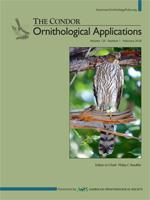In this book, Dr. David Scott, staff veterinarian for the Carolina Raptor Center in Charlotte, North Carolina, gives us insight into the clinical management of raptors at veterinary and rehabilitation centers. As stated in the Foreword, this is a “concise, day-to-day, clinical handbook” to assist veterinary professionals and raptor rehabilitators at all levels of skill and experience with the daily requirements for successful management of sick or injured birds of prey. It will also benefit falconers concerned about the health of their birds.
The book consists of 17 chapters that contain foundational as well as new perspectives on raptor rehabilitation and seven appendices covering many topics, including feeding guides, a formulary, anesthesia, patterns for restraint devices, laws and regulations, and resources. “Learning Objectives” at the beginning of each chapter and “Raptor Tips” throughout the chapters highlight important considerations for successful raptor rehabilitation; these unique, repeated features make the book very user-friendly. I found no glaring weaknesses in the text, though the bibliographies for most of the chapters contain many proceedings articles; this may be due to the current state of research in raptor medicine, which is still a young discipline. I would prefer more evidence-based citations, and proceedings articles may not be easy to track down for many members of the broad audience this text will serve.
In Chapter 1, the reader learns proper handling and restraint techniques as well as the many facets of the physical examination. The author provides a checklist that I appreciated because it provides a systematic approach to the physical exam and a reminder of many easily overlooked aspects. Furthermore, Chapter 1 includes intake protocols, providing a quick reference for common presentations of sick or injured raptors and methods of immediate stabilization of various illnesses and injuries. Chapter 2 is useful for veterinary professionals and rehabilitators as it highlights clinically important aspects of raptor anatomy and physiology. It doesn't specifically discuss the integumentary system, but feather anatomy is addressed in Chapter 13. Chapter 3, the longest chapter, provides an intriguing, extensive, and useful overview of species of birds of prey and several aspects of their natural history. Included in each species summary is the common name, species code abbreviation (for all North American species and select African, Australian, and European species), scientific name, normal weight range, diet, habitat, and reproductive details.
Of particular interest are Chapters 4–11 and 14, in which the author covers key aspects of fluid therapy, ophthalmology, infectious and noninfectious diseases, anesthesia, soft-tissue and orthopedic surgery, endoscopy, and clinical pathology. Chapter 6 is an excellent review of many infectious diseases that affect birds of prey. Each disease is presented by highlighting its etiological agent, clinical signs, diagnosis, treatment, prevention, and often a Raptor Tip regarding the particular disease discussed. Symbols are included to indicate zoonotic, contagious, and reportable diseases, and the chapter concludes with a helpful summary of each infectious disease, its clinical signs, and diagnostic methods for quick reference. In my opinion, Chapter 6 is one of the strongest and most important chapters in the book. Perhaps it and Chapter 15 (“Housing and Husbandry”) would be even stronger if they provided more specific details regarding isolation and biosecurity methods used by Dr. Scott when managing diseased raptors. Chapter 8 is a good summary of anesthesia, though some discussion of the use of analgesic agents, citing some of the evidence-based literature available for raptors and medications listed in Appendix B (“Formulary”), would have been a nice addition. Chapter 10 (“Orthopedics”) provides a detailed review of orthopedic conditions and surgery, complete with numerous hand-drawn illustrations, useful photographic images, and Raptor Tips. This chapter, which would rival similar chapters in many more comprehensive avian medicine textbooks, covers a solid portion of the depth and breadth of avian orthopedic surgery by detailing both older and newer techniques used to manage fractures in birds of prey and other avian species. Chapter 12 covers important considerations for managing orphaned raptors. Here, Dr. Scott highlights species and egg identification, handling, habituation and imprinting (mal-imprinting), a protocol for rearing orphans, and renesting juvenile raptors. Chapter 13 provides a great deal of information on feathers and ageing of common North American raptors as well as Dr. Scott's method of imping (a technique every raptor veterinarian or rehabilitator should know) to replace broken or damaged feathers. Finally, Chapters 15–17 discuss housing and husbandry, capturing birds trapped within manmade structures, and release of rehabilitated raptors.
In summary, Dr. Scott has succeeded with his stated intention, and this book should be available in every wildlife rehabilitation center, veterinary practice, and veterinary teaching hospital that treats wildlife. It provides excellent coverage of numerous topics but can easily be read and studied over the course of several days. Drawing upon his clinical knowledge, experience, and the available literature, Dr. Scott has produced a valuable contribution to the field of raptor medicine and surgery. As an avian veterinarian and academician, I would highly recommend it to any veterinary student or professional, new or seasoned raptor rehabilitator, falconer, or anyone interested in raptor medicine, surgery, and rehabilitation.






